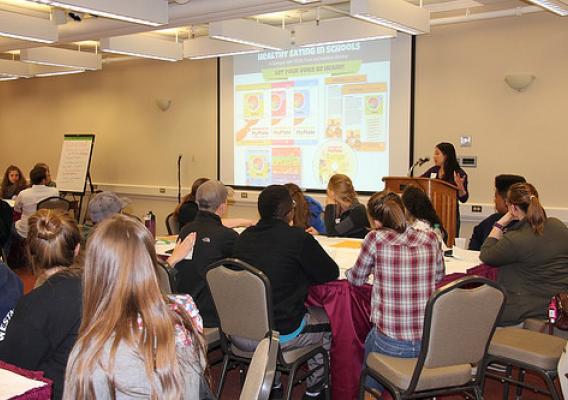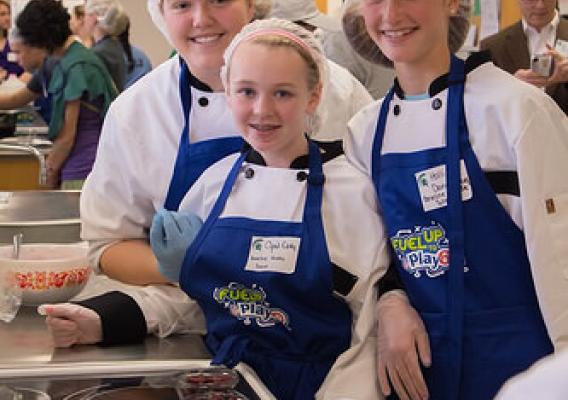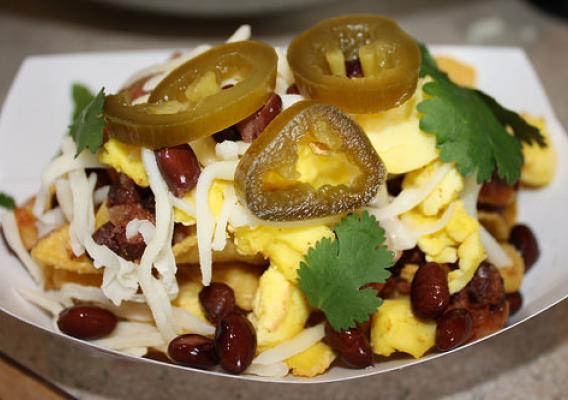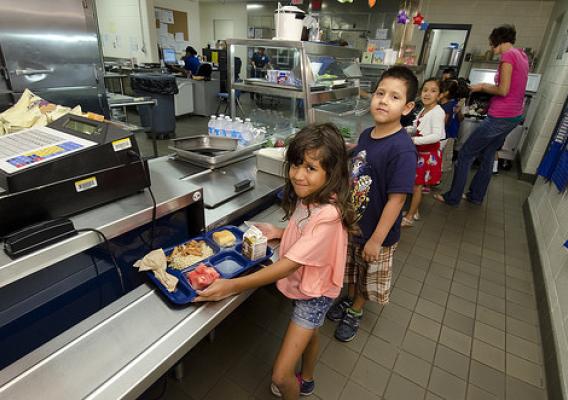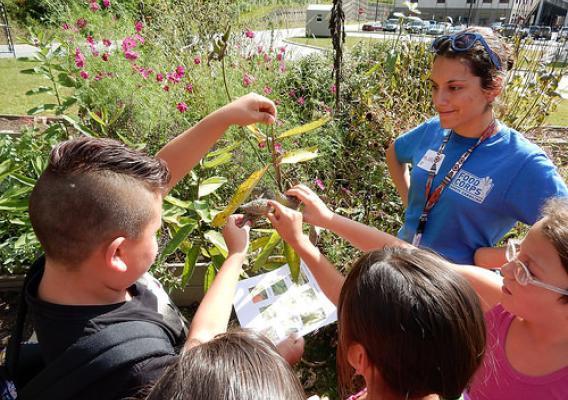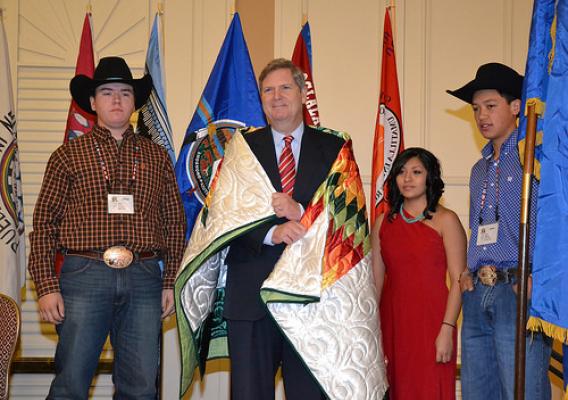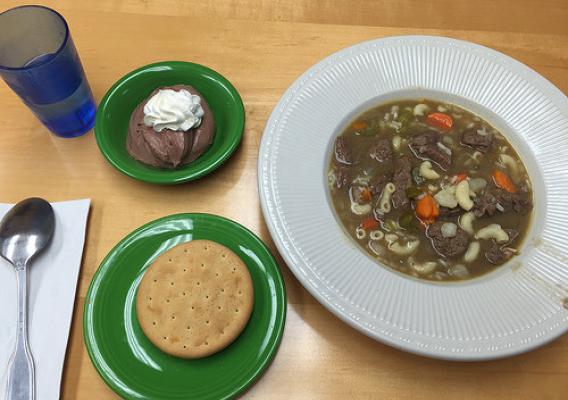In celebration of Native American Heritage Month, guest blog writer Katie Rainwater, also a FoodCorps Service Member, shares her remarkable experience at Cherokee Central Schools, a 2014 USDA Farm to School Grantee.
Guest blog by Katie Rainwater, FoodCorps
Imagine this: A bright, sunny fall day in the Smoky Mountains of Western North Carolina. Fresh, organic greens, lovingly raised in Cherokee Central Schools’ garden, and harvested that same day. Now add 22 elementary students proudly waving signs and banners they decorated the day before, boasting the beauty of their garden bounty, and advertising their Fall Greens Sale. If you ever bought into the idea that “kids don’t like vegetables,” our elementary schoolers could have changed your mind that day. Stationed in front of the school during after-school pick-up time, every car and person within reach received a glowing description of the wondrous greens the students helped grow, the most popular being a local native variety called Creasy Greens. Bedecked in fruit and vegetable costumes, these kids were convincing adults that they should eat their veggies! As a genuine testament to their enthusiasm and love for their harvest, they sold almost all of the 321 pounds of greens harvested that day.



